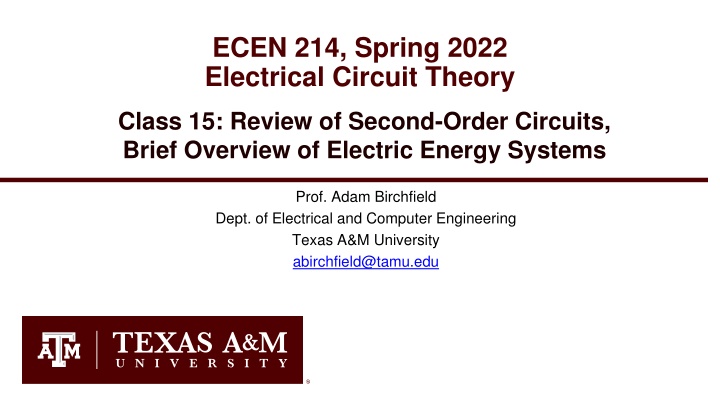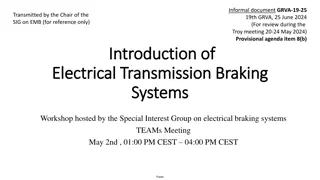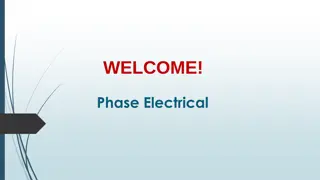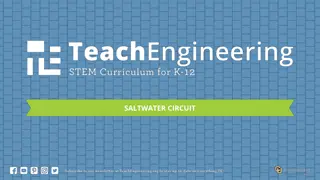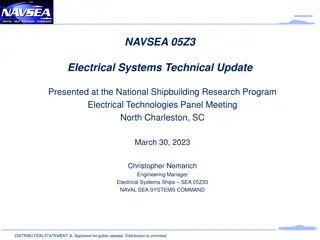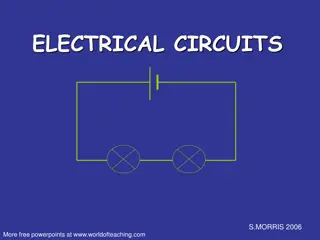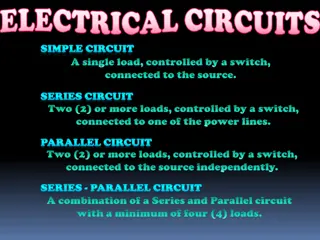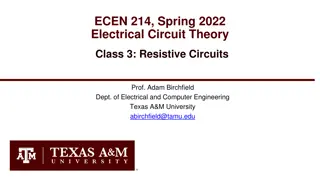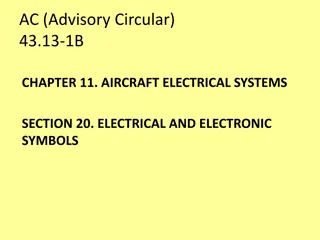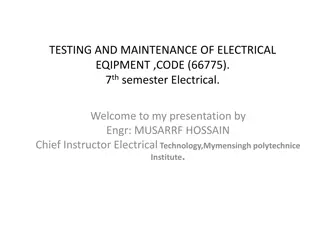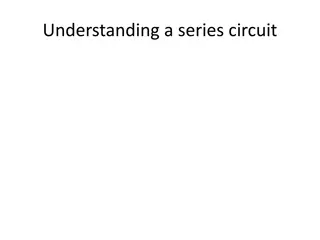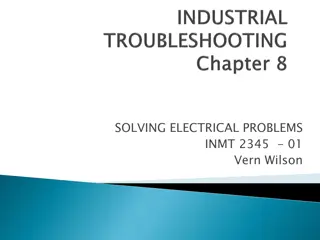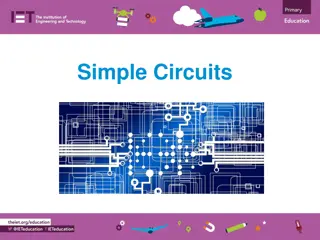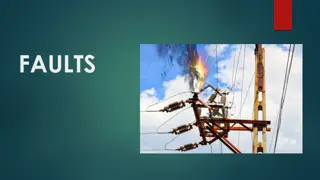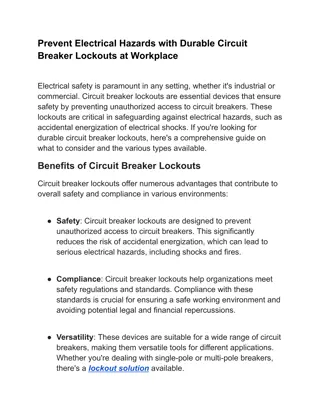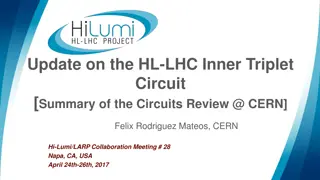Electrical Circuit Theory Review & Energy Systems Overview
In this class, a review of second-order circuits is provided along with an overview of electric energy systems. The focus shifts to AC circuit theory, highlighting electricity as a means for energy transportation and the concerns driving changes in the world's energy infrastructure. Key statistics on energy consumption and generation are discussed, setting the stage for a deeper dive into AC circuits. Major topics include US electricity generation sources, historical generator additions and retirements, and the advantages of electric power systems in delivering energy efficiently.
Download Presentation

Please find below an Image/Link to download the presentation.
The content on the website is provided AS IS for your information and personal use only. It may not be sold, licensed, or shared on other websites without obtaining consent from the author.If you encounter any issues during the download, it is possible that the publisher has removed the file from their server.
You are allowed to download the files provided on this website for personal or commercial use, subject to the condition that they are used lawfully. All files are the property of their respective owners.
The content on the website is provided AS IS for your information and personal use only. It may not be sold, licensed, or shared on other websites without obtaining consent from the author.
E N D
Presentation Transcript
ECEN 214, Spring 2022 Electrical Circuit Theory Class 15: Review of Second-Order Circuits, Brief Overview of Electric Energy Systems Prof. Adam Birchfield Dept. of Electrical and Computer Engineering Texas A&M University abirchfield@tamu.edu
2 Assignments Wednesday is Exam 2: Make your note sheet and study! Office hours Wednesday 1:30pm 4:00pm
3 AC Electric Circuits Used to Transport Bulk Energy The next major topic in this class is AC circuit theory One main use of electricity is as a means for energy transportation Use other sources of energy to create it, and it is usually converted into another form of energy when used About 40% of US energy is transported in electric form A number of concerns, including fossil fuel depletion, air and water pollution, and the greenhouse effect of carbon dioxide, are driving significant change in world energy infrastructure. Goal of this discussion is to provide some context for energy usage and the role of the bulk electric transmission grid, to set the stage for our study of AC circuits starting next week.
4 The Overall 2019 Energy Pie About 40% of our energy is consumed in the form of electricity, a percentage that is gradually increasing. The vast majority on the non-fossil fuel energy is electric. Total of 100.3 Quad; 1 Quad = 293 billion kWh (actual), 1 Quad = 98 billion kWh (used, taking into account efficiency) Most of the petroleum usage is in the transportation and industrial sectors, not the electric sector Source EIA Monthly Energy Review (EIA is US DOE Energy Information Administration) https://www.eia.gov/
5 US Electricity Generation In 2020, top sources were Natural Gas (41%), Nuclear (20%), Coal (19%), Wind (7.9%), Hydro (7.5%), Solar (2.4%). 1-year changes from 2018 to 2019 were Natural Gas (+8%), Nuclear (0%), Coal (-16%), Wind (+8%), Hydro (-2%), Solar (+13%). Source: EIA Monthly Energy Review, December 2020
6 Historical Generator Additions and Retirements Source: NREL Electricity Generation Baseline, 2017.
7 Electric Power Systems Electricity has many advantages for delivering the energy used by humankind Conversion to and from other forms is convenient and efficient (such as motors and generators) Transmission in bulk can be done quickly and efficiently over long distances (power lines) About 40% of U.S. energy consumption is electric Power systems range in size Large: four major interconnections in North America Medium: islands, militarily installations, ships Small: airplanes, automobiles, portable battery systems
8 North America 60 Hz Synchronous Interconnections Source: www.puc.texas.gov/industry/m aps/maps/ERCOT.pdf
9 Power Plant Tour! There will be a power plant tour for our class, hosted by Bryan Texas Utilities (BTU), on Tuesday, April 5 at 3pm. I sent a Google Form by email. You need to sign up (there may be limited space). This is optional and will not affect your grade. The plant is the largest one in our area, with a generation capacity of about 115 MW. The plant is undergoing a shutdown this week (common in off-peak months like April), so the noise levels should be lower. Source: https://www.btutilities.com/about-btu/btu-history/
10 Back to RLC Circuits How to Find Initial Conditions Find the initial conditions by looking at the circuit in steady-state before the switch, and then looking at the circuit immediately after the switch. If you need to find an initial condition for the derivative (such as ??? equation. Don t assume capacitor current or inductor voltage will be zero following the switch. Capacitors Inductors ??= ???? ??= ???? ??), use the differential Always True ?? ?? True in steady state ??= 0 ??= 0 (Open circuit) (Short circuit) Voltage does not change instantaneously (but current can) Current does not change instantaneously (but voltage can) Note: Voltage dividers only apply to two resistors in series. Current dividers only apply to two resistors in parallel. Don t use these equations for capacitors or inductors. True instantly following a switch
